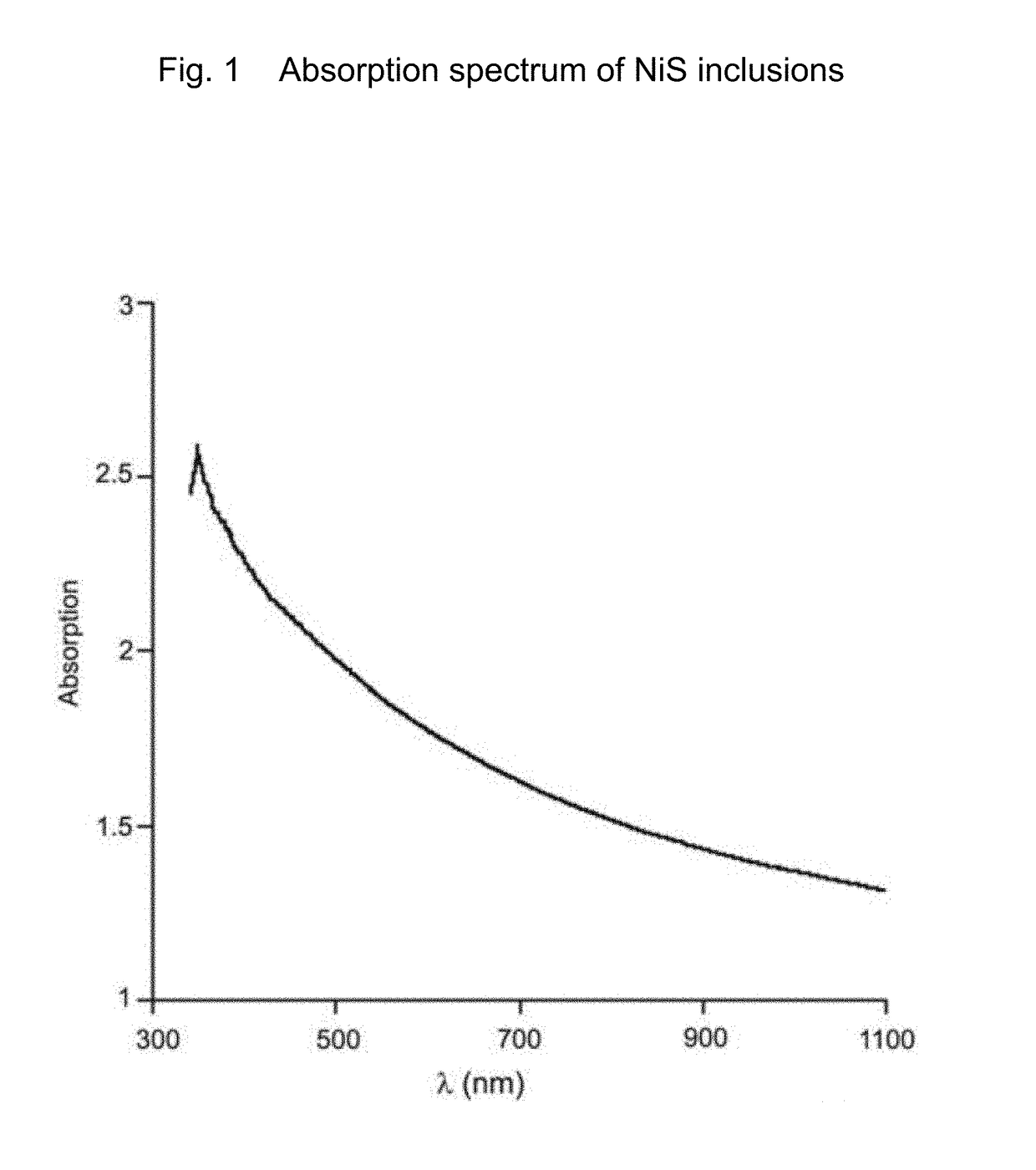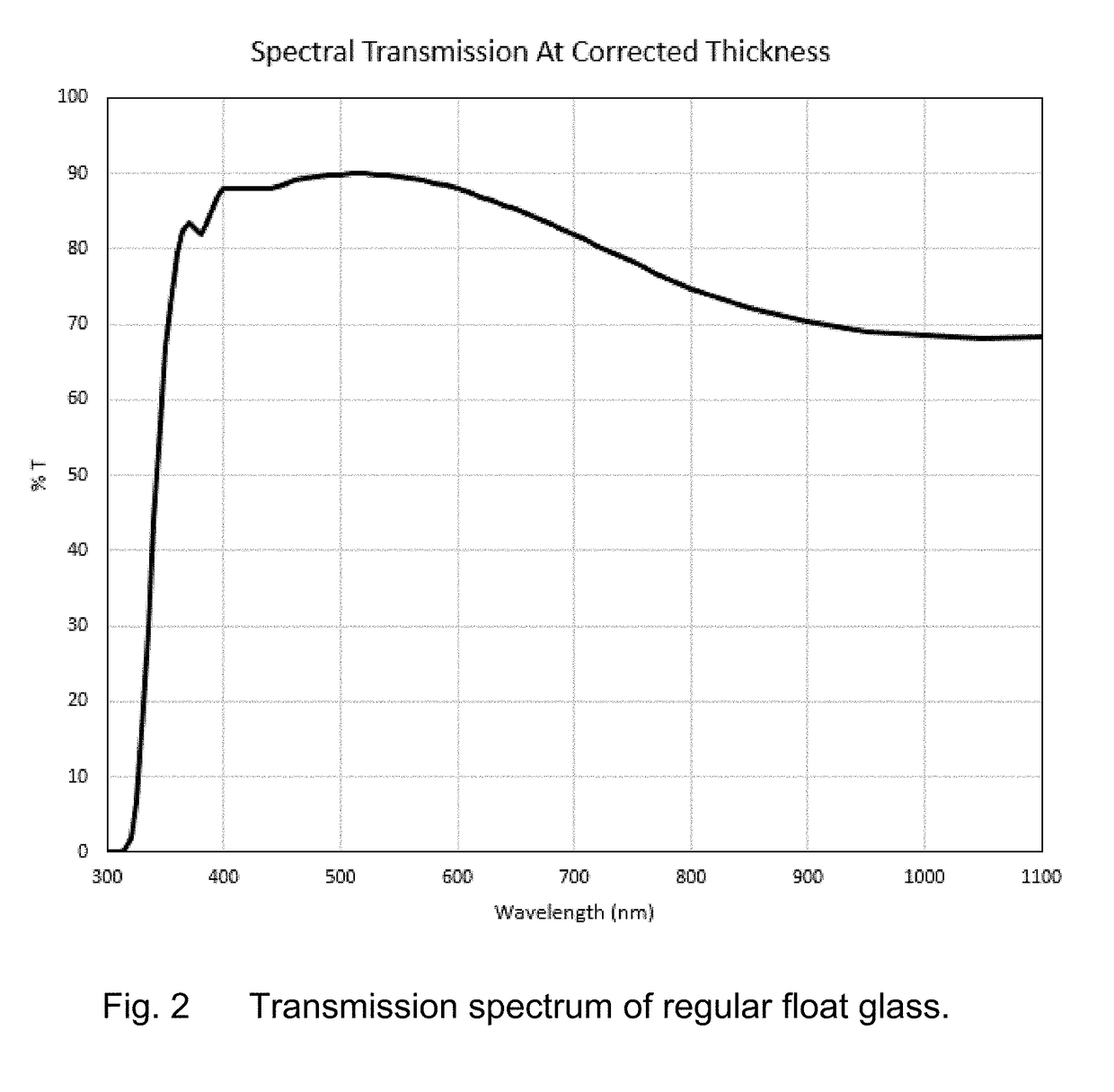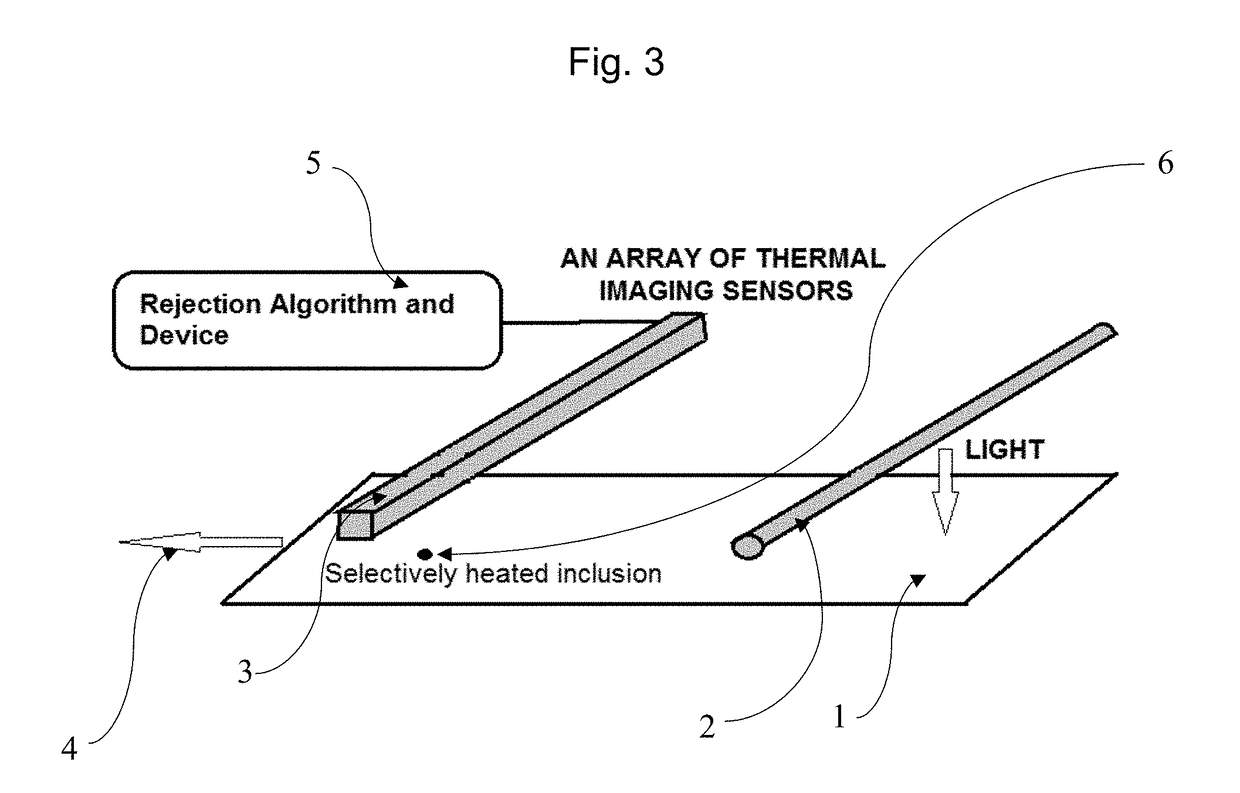Method and system for detecting inclusions in float glass
a technology of inclusions and float glass, which is applied in the field of methods and systems for detecting inclusions in float glass, can solve the problems of spontaneous breakage of thermally tempered glass, undesirable glass defects, catastrophic glass failure, etc., and achieves the effects of reducing the risk of glass failur
- Summary
- Abstract
- Description
- Claims
- Application Information
AI Technical Summary
Benefits of technology
Problems solved by technology
Method used
Image
Examples
Embodiment Construction
[0009]A method and / or system is provided for detecting inclusions (e.g., nickel sulfide based inclusions / defects) in soda-lime-silica based glass. In certain example embodiments, the soda-lime-silica based glass comprises a base glass portion that includes, by weight percentage: SiO2 67-75%, Na2O 10-20%, CaO 5-15%, Al2O3 0-7%, MgO 0-7%, and K2O 0-7%. Optionally, a colorant portion of the glass may further include one or more colorants such as iron, selenium, cobalt, erbium and / or the like.
[0010]In certain example embodiments of this invention, during the glass-making process, following the stage in the float process where the glass sheet is formed and floated on a molten material (e.g., tin bath), and at least partially cooled or allowed to at least partially cool such as at or after an annealing lehr, visible light from an intense visible light source(s) (e.g., flash lamp(s), laser(s), or the like) is directed at the glass and thermal imaging of the glass is used to detect inclusio...
PUM
| Property | Measurement | Unit |
|---|---|---|
| wavelength | aaaaa | aaaaa |
| wavelength | aaaaa | aaaaa |
| wavelength | aaaaa | aaaaa |
Abstract
Description
Claims
Application Information
 Login to View More
Login to View More - R&D
- Intellectual Property
- Life Sciences
- Materials
- Tech Scout
- Unparalleled Data Quality
- Higher Quality Content
- 60% Fewer Hallucinations
Browse by: Latest US Patents, China's latest patents, Technical Efficacy Thesaurus, Application Domain, Technology Topic, Popular Technical Reports.
© 2025 PatSnap. All rights reserved.Legal|Privacy policy|Modern Slavery Act Transparency Statement|Sitemap|About US| Contact US: help@patsnap.com



